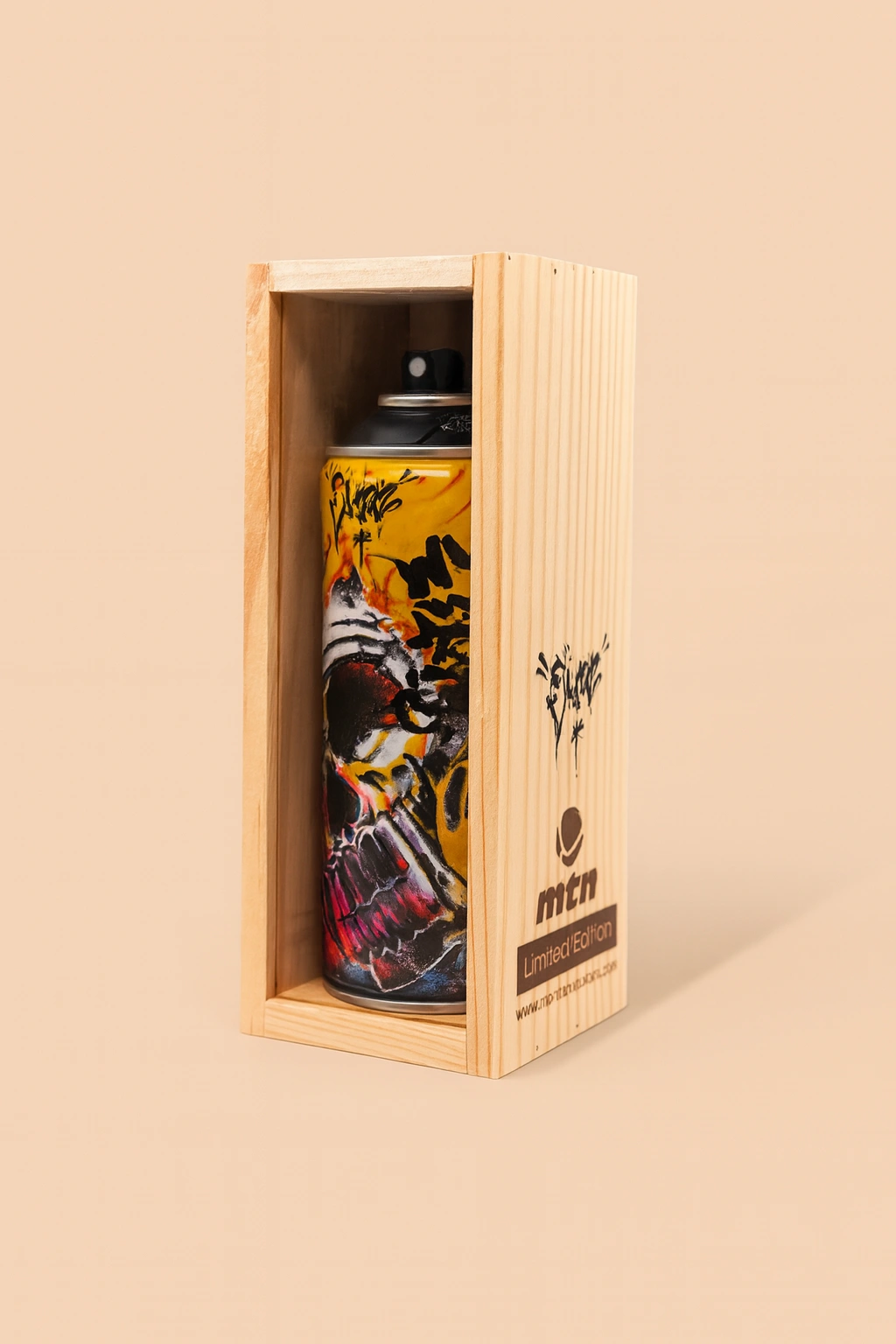Few books have had as significant an impression on graffiti culture as Spraycan Art, a 1987 publication by Henry Chalfant and James Prigoff. Often referred to as the most stolen book in London, Spraycan Art is more than just a collection of images—it is a visual and historical record of a rebellious and transformative art form. Through striking photographs and insightful narratives, the book documents the rise of graffiti art, primarily concentrated on the New York City subway movement, while also exploring its global influence.
Despite being controversial at the time of its release, Spraycan Art played a pivotal role in legitimizing graffiti as an art form, inspiring countless artists around the world. From New York’s subway cars to the streets of London, Paris, and Tokyo, the book helped graffiti evolve from an underground movement into a respected artistic discipline.
The Genesis of Spraycan Art
By the late 1970s and early 1980s, New York City had become the epicenter of the burgeoning graffiti movement. What started as simple tags on subway cars evolved into a sophisticated and dynamic visual language. Graffiti crews, made up of young artists using spray cans as their primary tool, turned the city’s subway system into a moving gallery, displaying intricate, large-scale murals that captured the raw energy of the streets.
Henry Chalfant, a photographer and filmmaker, immersed himself in this underground culture, capturing its fleeting nature through thousands of images. Unlike traditional gallery art, graffiti was ephemeral, often marginalized or painted over by authorities within days. Chalfant’s work preserved these creations, ensuring that they would be remembered even after they disappeared from public view.
Meanwhile, James Prigoff, an author and photographer passionate about urban art, joined Chalfant to co-author Spraycan Art. Their goal was to create a comprehensive visual history of graffiti, chronicling its evolution from simple vandalism to a full-fledged art movement. The result was a book that not only showcased graffiti’s artistic potential but also explored the stories, techniques, and motivations of the artists behind the work.
The Content and Structure of the Book
Spraycan Art is not just a collection of graffiti images—it is a deep dive into the movement itself. The book is structured thematically, offering a chronological and stylistic exploration of graffiti’s evolution.
New York: The Birthplace of Modern Graffiti
The book starts by tracing graffiti’s origins in New York City, documenting the rise of tagging culture and the transition to more elaborate and expressive pieces. It showcases the work of pioneering artists who transformed subway trains into vibrant canvases, pushing the boundaries of what could be achieved with spray paint.
Styles and Techniques
One of the book’s strengths is its detailed analysis of graffiti techniques. It explores the different lettering styles, the use of color, and the unique artistic signatures that distinguish one artist from another. From bubble letters to wildstyle, the book highlights the innovation that graffiti artists brought to their work.
The Global Expansion of Graffiti
Though it focuses heavily on New York, Spraycan Art also examines how graffiti spread beyond the United States. The book showcases early examples of European graffiti scenes, particularly in London, Paris, and Amsterdam, where artists began adapting and evolving the styles first pioneered in New York.
Graffiti Crews and Connection
Graffiti is often a blended effort, and Spraycan Art emphasizes the importance of crews—groups of artists who worked together to create large-scale pieces. These collaborations involved strategic planning, skillful execution, and an understanding of urban landscapes, transforming graffiti into a shared creative endeavor.
The Global Impressionism of Spraycan Art
When Spraycan Art was released in 1987, it quickly became a cultural phenomenon. Unlike earlier books about graffiti, which often approached the subject from a law enforcement or vandalism perspective, Spraycan Art presented graffiti as a legitimate and innovative art form.
For aspiring graffiti artists, the book was a treasured resource, offering inspiration, techniques, and insight into a sequestered realm. It provided visual documentation of pieces that many outside of New York had never seen before. This accessibility helped graffiti gain international recognition, fueling its spread across Europe, Asia, and beyond.
Why Was Spraycan Art the Most Stolen Book in London?
In London, Spraycan Art became infamous for its popularity in bookstores and libraries—not just because people wanted to buy it, but because it was frequently stolen. There are several reasons why this book became so coveted:
Essential Reading for Graffiti Artists – The book was a rare source of information about graffiti at a time when mainstream media dismissed it as vandalism. Young artists saw it as a graffiti dogma, making it highly desirable.
Expensive and Hard to Find – As the book gained cult status, it was not always readily available or affordable for everyone, leading some to “liberate” copies rather than purchase them.
Countercultural Appeal – The graffiti movement was built on insurrection and resistance, and some saw stealing the book as an extension of that ethos—an act of defiance in itself.
The Artists Behind the Art
Spraycan Art doesn’t just highlight graffiti—it celebrates the artists who pioneered the movement. The book features legends such as:
• Dondi White – Known for his pioneering wildstyle lettering and fluid compositions.
• Futura 2000 – A graffiti artist who blended abstract elements with traditional graffiti.
• Lee Quiñones – A key figure in the subway graffiti movement, famous for his elaborate, large-scale murals.
These artists, and many others featured in Spraycan Art, helped define the visual language of street art, influencing generations of artists who followed.
The Bequest of Spraycan Art
Over three decades later, Spraycan Art remains one of the most important and influential books on graffiti. It played a crucial role in shifting public perception, paving the way for street art to be recognized as a legitimate artistic movement.
Bridging the Gap Between Graffiti and Fine Art
The book contributed to the eventual mainstream acceptance of graffiti, helping artists transition into galleries, museums, and high-profile commissions.
Inspiring New Generations
New generations of artists continue to draw inspiration from the book, using it as a reference and historical record of graffiti’s golden age.
Preserving a Fleeting Art Form
Because graffiti is often temporary, Spraycan Art serves as a historical archive, preserving works that might have otherwise been lost.
A Timeless Tribute to Graffiti Culture
Spraycan Art is more than just a book—it is a cultural milestone that helped graffiti evolve from an underground movement into a globally recognized art form. Through the lens of Henry Chalfant and James Prigoff, readers are transported into a world where artists defy boundaries, risk everything, and redefine creativity.
No comments yet.








